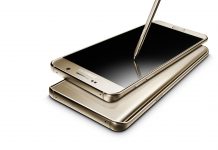 Last week, Publishing Perspectives covered the Mobile World Congress in Barcelona. One of the facts that came out was that smartphone use had more than quintupled from 2.4% of the mobile market to 15.4% in 2008. Publishing Perspectives reporter Hannah Johnson noted:
Last week, Publishing Perspectives covered the Mobile World Congress in Barcelona. One of the facts that came out was that smartphone use had more than quintupled from 2.4% of the mobile market to 15.4% in 2008. Publishing Perspectives reporter Hannah Johnson noted:
If book publishers add one thing to their to-do lists this year, it should be to develop and execute a mobile content strategy to take advantage of this growth.
The article goes into detail about how the market for media content on these phones is growing by leaps and bounds, but is limited to a certain extent by app store fragmentation—each smartphone maker has its own separate app store.
To try to solve this problem, twenty-four mobile carriers are joining together to create a cross-platform app store called the Wholesale Application Community,
Carriers include Verizon, AT&T, T-Mobile, Sprint, and Vodafone. The goal is to “establish a simple route to market for developers” and to provide customers with access to the widest range of apps available. No specific launch date was announced. E-book app developers still have a chance to get into this community from the beginning.
The article does not mention whether Apple will be cooperating with this effort. Given that (as I mentioned earlier today) Apple has about 95% of the mobile handheld device market and is notorious for keeping its platform closed, if Apple is not on board then they may reach considerably fewer than the “three billion consumers” the article projects.
Cell Phones More Important?
Elsewhere on Publishing Perspectives, Edward Nawotka thinks that cell phones may be more important to the future of publishing than dedicated e-reading devices. Whereas in the US dedicated devices such as the Kindle, Nook, and iPad get most of the spotlight, these devices have been slow to make it to the rest of the world and so most people elsewhere read on their mobile phones.
Since mobile phones tend to be considerably less expensive than e-book devices, in the developing world they are far more likely to be owned for other purposes already. (We covered the use of cell phones for e-book reading in Africa last year.)
The arguments against cell phones for e-book reading tend to be that the screen is too small and the backlit displays may promote eyestrain. However, as the first Publishing Perspectives article notes, new display technologies are being developed that may reduce the eyestrain potential—and the small size may be an advantage in terms of having the device with you at all times. A Kindle may be a great size for reading, but you can’t put it in most pockets.
We have discussed device convergence a number of times on TeleRead, and there are usually some skeptics. But I strongly suspect that even if single-purpose e-book readers do not go away, their role will gradually decrease in favor of multi-function gadgets like the iPad—but also, and perhaps even more, the iPad’s smaller siblings.

































This has been discussed many times, but is still important. I do not believe much long form reading (full length books) are done on the phones. Short form yes- articles, even short stories. But novels, no.
On the convergence devices like the iPad, no more than 10% of the time on the device will be used to read BOOKS, and the same is true with cell phones, IMHO. So, not that big a factor.
I have read several hundred books on Windows Mobile phones between 2004-2008, and many more on iPhone since then. It is possible, it is convenient and certainly works for me.
Reading doostop books like Anathem on the iPhone is certainly easier when travelling!
I agree with Christo. I’ve read books on my Palm T/X, HTC Touch, iPod Touch and iPhone. They make much better readers than the Sony eReaders I’ve tried and I’ve tried them all since the 505 or the Kindle. In fact, my iPhone and iPod Touch are what I use all the time. The first commentator knows not of what they speak.
Re: I do not believe much long form reading (full length books) are done on the phones.
We are serving millions of books to Smartphone and non-Smartphone users every month. For example, on iPhone/iPod, our users are spending close to 1.5 hour/day to read Wattpad’s content.
You can also check out our metrics report if you want to know the detail:
http://www.wattpad.com/metricsreport
I may be mistaken here, but to my understanding in Japan, and I think Korea, there is a large group of people reading books on their cell phones. I think many of them are more novella size. I think part of why things have not taken off here as much is our fragmented distribution market and countries like Japan are further ahead on the adoption curve of smart phones. I have read articles about book stores in japan being angry because people were using their cell phone cameras to take pictures of magazines and then walking away to read them on their phones. Plus the market options may drive cell phone reading options as well. In India it is harder to find a book store in the rural areas, but they have cell phones that can download it instantly. Also I think I have heard about a fairly high adoption of cell phones in Africa, where people do not have a computer necessarily but phones are more readily available. An article eariler here on Teleread mentioned that publshing in Egypt often only had a reach of 5km of their publishing house. So cell phones seem a natural way to get out their product to a wide group of people quickly and easily in the most common portable device around, the cell phone.
Erik Peterson is exactly right.
Ebook reading on cellphones is a force *today* in several asian markets and is on the rise in the west, where early adopters have been reading on PDAs for over a decade and a significant share of cellphone users are reading both short and long-form content on smartphones *today*.
Kindle for iPod exists for a reason.
B&N Reader, eReader, and all the ebook apps on the iPxxx exist for a reason.
And that reason is that people are using them.
To pretend significant numbers of people are not reading on cellphones and iPods today is to reside in BPH dreamland.
It is important to remember that in many parts of the world cellphones are the *only* computer people have access to. To deprecate that mobile platform is to ignore a vast market and anybody that ignores significant markets invariably pays for it.
Dedicated readers are important today and will be important for at least a whie.
Tablets may or not be important in the short and long term; only time will tell.
But cellphones are important today and *will* be important indefinitely.
Both the author of this post and the first commentator don’t know what they’re talking about, per usual. I’ve purchased ~225 Kindle books and ~30 Baen ebooks in the last 2.5 years; I’ve read ~100 Kindle books on my iPhone since the Kindle app became available, ~15 Baen books on my iPhone, and my hardware Kindle gathers dust.
Reading books on the iPhone via the Kindle for iPhone and Bookshelf apps is infinitely superior to reading them on the hardware Kindl, IMHO, due to the greater physical portability, larger storage, backlighting, and interational multimode communications (3G, WiFi) which have been available for the iPhone reading apps from the moment these reader applications were published in the iTMS.
Both the original author of this post and the initial commentator are simply pretending their own personal preferences/biases are objective fact; they should really know better.
Roland, your post confuses me. You claim we don’t know what we’re talking about, and then you agree with us?
(Well, with me anyway.)
Doh, I misread your article – sorry about that! It’s the initial commenter with whom I disagree. My apologies for conflating your views with his!
I do disagree with the contention of some that heavy reading with existing smartphones leads to eyestrain. The gorgeous screens on all the iPhone/iPod Touch models lend themselves quite well to reading for long periods of time.